You are using an out of date browser. It may not display this or other websites correctly.
You should upgrade or use an alternative browser.
You should upgrade or use an alternative browser.
Atkinson Traveler build; inwales & ribs
- Thread starter patrick corry
- Start date
patrick corry
solo canoeist
If I go with the alternative seat weaving, I'll probably make thwarts and seat rails like this. Just a quick & dirty experiment so far on a piece of Spruce. Tapered ends, gently radiuses edges, tapered upper surface on an arc as well.


On a different topic, I have a number of small knot holes to fill in my planking. I managed to put most of them on ribs so with the exception of two minor spots. I thought of filling with a two-part wood filler but I'm concerned that the resulting hard filler could detach and migrate under the canvas after some time. Any alternatives? Maybe just linseed oil based window glazing? That's apparently what I've found on several restorations.
On a different topic, I have a number of small knot holes to fill in my planking. I managed to put most of them on ribs so with the exception of two minor spots. I thought of filling with a two-part wood filler but I'm concerned that the resulting hard filler could detach and migrate under the canvas after some time. Any alternatives? Maybe just linseed oil based window glazing? That's apparently what I've found on several restorations.
MGC
Scrapmaker
Patrick, Some folks use fairing compound. Some use bondo. I have fairing compound handy so that's what I would use.
Change of subject....the tacks on that plank to the right of your fascia thwart appear to be sitting proud. The ones that are right next to it look really good with a nice dimple from the hammer head. Not to get too picky, ut it looks like you will need to make a trip around that hull with the clinching iron.
Change of subject....the tacks on that plank to the right of your fascia thwart appear to be sitting proud. The ones that are right next to it look really good with a nice dimple from the hammer head. Not to get too picky, ut it looks like you will need to make a trip around that hull with the clinching iron.
patrick corry
solo canoeist
Some progress. Thwarts are rough shaped:

Seat frame components rough shaped as well to mimic the thwarts; note in the third picture below, the cross rails will be 3/8" Oak dowels rather than 3/4"x1 1/2" stretchers one normally sees, and the holes for these have been drilled. I am going to go with the woven cane seat shown here:



Decks are installed:


And, at Mike's suggestion I have gone over the hull and done quite a bit more tack clinching, and now have 4 coats of gloss varnish in the interior. Once all varnishing is up to the same level, I'll make final coats with semi or satin to knock down the gloss a bit.
Seat frame components rough shaped as well to mimic the thwarts; note in the third picture below, the cross rails will be 3/8" Oak dowels rather than 3/4"x1 1/2" stretchers one normally sees, and the holes for these have been drilled. I am going to go with the woven cane seat shown here:
Decks are installed:
And, at Mike's suggestion I have gone over the hull and done quite a bit more tack clinching, and now have 4 coats of gloss varnish in the interior. Once all varnishing is up to the same level, I'll make final coats with semi or satin to knock down the gloss a bit.
Tim Parent
Curious about Wooden Canoes
Tim, I have no doubt that you'll be able to dry bend your spruce inwales successfully, providing the grain structure is consistent. On my first attempt I used local spruce and had one side fail due to a spot of twisty grain. I suspected it might be problematic and, of course, it was! I decided to take no chances with the nicer Sitka spruce pieces I used on round 2.
I tapered my inwales to about 1/4" in width at the stem which I assume makes them more flexible, but at the same time perhaps more fragile.
View attachment 56952
Tim Parent
Curious about Wooden Canoes
Can you tell me the cross sectional dimensions of your rails, and if they are beveled or square on the inside faces?
Thanks very much.
Thanks very much.
patrick corry
solo canoeist
Tim, the inwales are square on the inner face, bottom, and top. Bevelled only on the outer face where ribs will land.
Tim Parent
Curious about Wooden Canoes
And a matching bevel on the outwale, right? It looks to me from the lines and offsets in the book that the bevel averages out to about 1/16th from plumb. Is that in the ballpark?
patrick corry
solo canoeist
Grab handles, thwarts, and seat frames varnished:


and installed (though not seats- they need to be woven):

Grab handles are radiuses across their width, and lightly tapered at the ends resulting in a slight crown which mimics the crowned decks:

The exterior of the hull has received a coat of 50/50 varnish/thinner prior to going into the canvas:

And canvas stretched overnight before being loosened to allow the canoe to be dropped in:

Canoe in the canvas with two bundles of shingles (150 lbs) wrapped in large garbage bags to avoid getting granules in the canoe provide weight to press the canoe down into the fabric:

Over the last two weeks an old canoe found me! An acquaintance of mine who knows I like old canoes arranged for a friend of his to give me an Old Town canoe which the owner had decided to get rid of. Turns out via the serial number imprinted into the stems, it was delivered to Trenton, NJ in 1919, exactly one year to the day before my Dad was born! It's a 16' Heavy Water model (designed with a rounder bottom than the OTCA model, and therefore preferred at the time for river travel), in CS grade which refers to "common sense"- a less expensive canoe with Spruce seats, thwarts, decks, and rails rather than Mahogany. It's in really good shape for being 105 years old! Another project in waiting...

and installed (though not seats- they need to be woven):
Grab handles are radiuses across their width, and lightly tapered at the ends resulting in a slight crown which mimics the crowned decks:
The exterior of the hull has received a coat of 50/50 varnish/thinner prior to going into the canvas:
And canvas stretched overnight before being loosened to allow the canoe to be dropped in:
Canoe in the canvas with two bundles of shingles (150 lbs) wrapped in large garbage bags to avoid getting granules in the canoe provide weight to press the canoe down into the fabric:
Over the last two weeks an old canoe found me! An acquaintance of mine who knows I like old canoes arranged for a friend of his to give me an Old Town canoe which the owner had decided to get rid of. Turns out via the serial number imprinted into the stems, it was delivered to Trenton, NJ in 1919, exactly one year to the day before my Dad was born! It's a 16' Heavy Water model (designed with a rounder bottom than the OTCA model, and therefore preferred at the time for river travel), in CS grade which refers to "common sense"- a less expensive canoe with Spruce seats, thwarts, decks, and rails rather than Mahogany. It's in really good shape for being 105 years old! Another project in waiting...
Michael Grace
Lifetime Member
Looking good, Patrick! I forgot to mention in an earlier post about sycamore - it is extremely prone to rot, so be sure to seal the end grain very well. Thwart ends, for example, often got no or little varnish in the old factories. Even with less rot-prone wood, I saturate end grain until it holds a surface film of varnish so the wood won't readily wick up water. Also, one of your posts mentions knot holes. How did you treat them? Best to avoid them altogether, but if they are there, what to do? Best would be to splice in wood rather than using any kind of filler compound that would likely be unsightly and could come loose at some point in the future. Maybe too late to discuss now, but food for thought. And by the way, that appears to be an exceptionally nice HW for its age. Enjoy!
patrick corry
solo canoeist
Thanks Michael. I did soak the end grain of thwarts, seat frames, and grab handles. I filled the small knot holes with a two-part wood filler. Hopefully it will remain solid. I first scoured the perimeter of the holes to remove the tiny film of bark present in some of them. I had no choice... most of my planking stock was probably what Old Town would have called 'common sense'!
The HW is in amazing condition. The inwales have lots of holes from various seat and thwart combinations over the years, and one outwale has damage at each end, the other is fully intact. I haven't removed the canvas yet, but I see no evidence of any significant planking problems. Should be a fun one.
The HW is in amazing condition. The inwales have lots of holes from various seat and thwart combinations over the years, and one outwale has damage at each end, the other is fully intact. I haven't removed the canvas yet, but I see no evidence of any significant planking problems. Should be a fun one.
patrick corry
solo canoeist
Fully canvassed and ends closed up. Ready for filler tomorrow.




Canvas 'fuzzies' flamed off, brushed and vacuumed.

I mixed leftover Kirby's filler and Northwoods Canoe filler together to make about 1.3 gallons. Certainly hope they're compatible! So far the two mixes haven't misbehaved in the cans...
Canvas 'fuzzies' flamed off, brushed and vacuumed.
I mixed leftover Kirby's filler and Northwoods Canoe filler together to make about 1.3 gallons. Certainly hope they're compatible! So far the two mixes haven't misbehaved in the cans...
patrick corry
solo canoeist
Canvas filled.



patrick corry
solo canoeist
1st seat weave, the stern seat. Going well so far....

Bow seat horizontals:

Closer look:

Verticals begun on bow seat:

Bow seat horizontals:
Closer look:
Verticals begun on bow seat:
Last edited:
Dan Lindberg
Ex Wood Hoarder
This seems like a lot of work to me, any idea why he didn't just get a 16' Cruiser?
Dan
FWIW I've had both a 18 and 16 ft Cruiser, and now I'm in my "reduce the fleet" mode, both are gone and I've only kept a Peterborough 16' Champlain, just cause it paddles so nice.
Dan
FWIW I've had both a 18 and 16 ft Cruiser, and now I'm in my "reduce the fleet" mode, both are gone and I've only kept a Peterborough 16' Champlain, just cause it paddles so nice.
An online acquaintance of mine from Canoetripping.net, Robin Lauer, did essentially the same thing though skipping the form process. He shortened an 18’ Chestnut ‘Leader’ making it into a 16’ Chestnut ‘Cruiser’.
patrick corry
solo canoeist
The woven seats went reasonably well. I like the result. Bow seat needs the tiny feathers trimmed, and I already fixed the errant cane at the lower left of the bow seat.
The seat frames were subtly radiused front and rear, but with the cane wrapping it's largely masked. Perhaps that would be better suited for conventional cane seating where the edges of the frame aren't concealed. It's a little more evident in person than in the photos so still worth the effort.

The seat frames were subtly radiused front and rear, but with the cane wrapping it's largely masked. Perhaps that would be better suited for conventional cane seating where the edges of the frame aren't concealed. It's a little more evident in person than in the photos so still worth the effort.
Vinci
Curious about Wooden Canoes
I also began to build a canoe with wooden ribs. I first used my Prospector 16 - shaped boat as a test. Before that, I have a question to ask you all. For the canoe I made by gluing thin wooden strips together, a lot of bubbles appeared the day after I wrapped it with fiberglass cloth. Why is that? As you can see in the photos, is it because I pasted the fiberglass cloth in the wrong way? Or is it for some other reasons?
Attachments
-
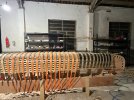 WechatIMG15708.jpg263.2 KB · Views: 87
WechatIMG15708.jpg263.2 KB · Views: 87 -
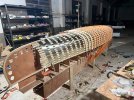 WechatIMG15709.jpg255.4 KB · Views: 87
WechatIMG15709.jpg255.4 KB · Views: 87 -
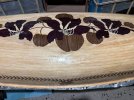 WechatIMG15703.jpg250.4 KB · Views: 85
WechatIMG15703.jpg250.4 KB · Views: 85 -
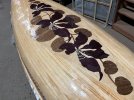 WechatIMG15704.jpg255.7 KB · Views: 82
WechatIMG15704.jpg255.7 KB · Views: 82 -
 WechatIMG15707.jpg277.8 KB · Views: 78
WechatIMG15707.jpg277.8 KB · Views: 78 -
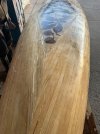 WechatIMG15705.jpg215.5 KB · Views: 77
WechatIMG15705.jpg215.5 KB · Views: 77 -
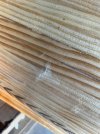 WechatIMG15710.jpg265.2 KB · Views: 79
WechatIMG15710.jpg265.2 KB · Views: 79 -
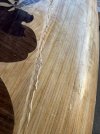 WechatIMG15712.jpg238 KB · Views: 86
WechatIMG15712.jpg238 KB · Views: 86
Similar threads
- Replies
- 4
- Views
- 1K
